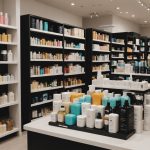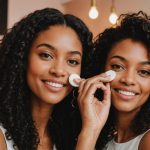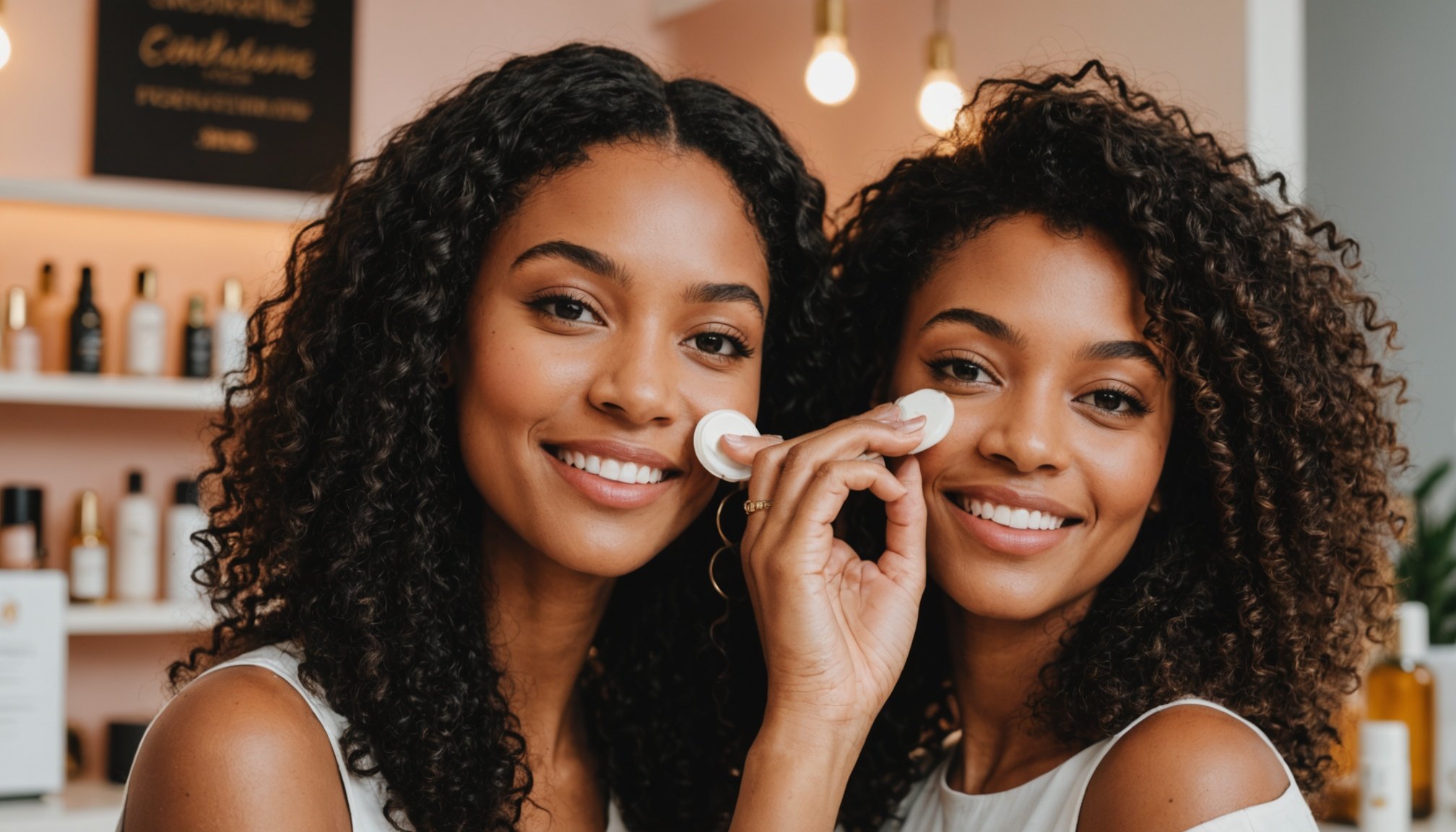Unlocking the Power of User-Generated Content: An Essential Playbook for UK Beauty Brands to Elevate Their Marketing Strategies
In the ever-evolving landscape of the beauty industry, user-generated content (UGC) has emerged as a pivotal element in marketing strategies. For UK beauty brands, leveraging UGC can be a game-changer, enhancing customer engagement, building brand loyalty, and driving sales. Here’s a comprehensive playbook on how to harness the power of UGC to elevate your marketing strategies.
The Importance of User-Generated Content in Beauty Marketing
User-generated content is more than just a trend; it’s a powerful tool that resonates deeply with consumers. In the beauty industry, where trust and authenticity are paramount, UGC can bridge the gap between brands and their customers.
Also read : Unlocking Success for UK Businesses: The Ultimate E-invoicing Adoption Guide
Why UGC Matters
- Trust and Authenticity: Consumers are more likely to trust recommendations from peers rather than traditional advertising. A study by Nosto found that 74% of consumers are more likely to make a purchase from a company that hosts reviews on its website[1].
- Engagement and Community: UGC fosters a sense of community and engagement. For instance, brands like Beautypie encourage members to share reviews, access professional makeup tips, and contribute ideas or content for social media, strengthening emotional bonds with customers[2].
- Cost-Effective: Compared to producing high-end marketing content, UGC is cost-effective. Allowing users to upload their own content, including photos and videos, can significantly increase brand loyalty without a hefty price tag[1].
Leveraging Social Media for User-Generated Content
Social media platforms are the heartbeat of UGC, providing a vast canvas for brands to engage with their audience.
Key Platforms for UGC
- Instagram: As a visual medium, Instagram is ideal for beauty brands. Around 4 in 5 beauty shoppers use Instagram daily, and brands report that influencer marketing is more effective than direct mail[1].
- Example: Kylie Cosmetics, with over 25 million followers on Instagram, is a prime example of how a brand can dominate social media and drive engagement through UGC[1].
- YouTube: YouTube is the top source for beauty-related content among women aged 18-54. Watch times for “makeup transformation” videos more than double each year, indicating a strong interest in video content[1].
- Example: Influencers like Nikkie de Jager with 14 million YouTube subscribers showcase the immense reach and influence of beauty content creators[1].
- TikTok: TikTok is rapidly becoming a hub for short-form, engaging content. Gen Alpha, the next cohort of consumers, is particularly active on TikTok, using it to discover new products and engage with brands[2].
- Example: Brands can draw inspiration from campaigns like Dove’s “The Face of 10,” which combats body issues by featuring young girls and promoting natural beauty standards, a strategy that resonates well on TikTok[3].
Strategies for Encouraging User-Generated Content
Encouraging UGC requires a thoughtful and engaging approach. Here are some strategies to get you started:
Also to read : Unlocking Success: The Essential Guide to Crafting Brand Strategies for UK Fashion Labels
Interactive Quizzes and Virtual Try-Ons
- Interactive Quizzes: Brands like Function of Beauty offer interactive quizzes that allow users to order and even name their own customized skincare and hair products. This not only enhances the customer experience but also encourages users to share their personalized products on social media[1].
- Virtual Try-Ons: Technologies like augmented reality (AR) and virtual reality (VR) are reshaping the beauty shopping experience. Brands like L’Oréal’s BeautyTech initiatives empower users to explore, test, and select products in real-time before making a purchase[2].
Influencer Marketing
- Collaborate with Influencers: Beauty influencers have tremendous reach and can significantly influence purchasing decisions. Around 2 in 3 beauty shoppers say they turn to influencers to discover new products[1].
- Example: Influencers like Huda Kattan with over 50 million Instagram followers can promote products to a vast and engaged audience[1].
- Authenticity and Trust: Consumers know that influencers are paid to promote products, so likeability and trust are crucial. Brands should ensure that influencers align with their brand values and promote products genuinely[1].
Hosting Reviews and User-Generated Content
- On-Site Reviews: Hosting reviews on your website can significantly boost trust and conversions. A study by Nosto found that 74% of consumers are more likely to make a purchase from a company that hosts reviews on its website[1].
- User-Generated Content Campaigns: Encourage customers to share their experiences with your products. For example, Fireball’s “Fireball Fridays” campaign challenges fans to show how they enjoy the product, with the best content featured on the brand’s Instagram page[3].
Building a Community Through User-Generated Content
Building a community around your brand is essential for long-term success. Here’s how you can leverage UGC to foster a loyal community:
Creating Engaging Content
- Aspirational Education: Gen Alpha responds well to aspirational education and entertainment. Brands should create engaging, age-appropriate content that empowers this young generation to care for their skin with safe and effective skincare practices[2].
- Authenticity and Inclusivity: Brands like Cult Beauty, which banned retouched model imagery in its marketing, promote self-acceptance and inclusivity. This approach fosters meaningful connections and builds future loyalty with customers[2].
Encouraging Co-Creation
- Membership Models: Brands like Beautypie use membership-based models to encourage active participation from customers. Members enjoy significant savings and are encouraged to share reviews, access professional makeup tips, and contribute ideas or content for social media[2].
- Social Media Challenges: Running social media challenges can generate a lot of user-generated content. For example, Fireball’s “Fireball Fridays” challenges fans to find creative ways to show how they enjoy the product, with the best content featured on the brand’s Instagram page[3].
Measuring the Success of User-Generated Content Campaigns
To ensure that your UGC campaigns are effective, you need to track and measure their performance.
Key Metrics to Track
- Engagement Metrics: Track likes, comments, shares, and other engagement metrics to see how users interact with your content.
- Conversion Rates: Measure the number of purchases or sign-ups generated from UGC campaigns.
- Customer Retention: Analyze how UGC affects customer retention and loyalty.
- Social Media Monitoring: Use tools like Meltwater to track social media posts and compare engagement metrics to specific actions[3].
Practical Insights and Actionable Advice
Here are some practical tips to help you integrate UGC into your marketing strategy effectively:
Personalized Recommendations
- Personalization: Consumers who get personalized recommendations are 75% more likely to make a purchase. Use data analytics to provide tailored product recommendations to your customers[1].
Sustainability and Transparency
- Green Practices: Gen Alpha and their parents are highly attuned to greenwashing and prefer brands that demonstrate clear, transparent, and genuine sustainability practices. Highlight your brand’s commitment to natural or organic ingredients and ‘clean’ formulations[2].
Leveraging Technology
- AR and VR: Invest in technologies like AR and VR to enhance the customer experience. For instance, ModiFace has partnered with over 70 beauty brands to bring augmented reality to the masses[1].
Table: Comparing Key Social Media Platforms for Beauty Brands
| Platform | Key Features | User Demographics | Engagement Strategies |
|---|---|---|---|
| Visual medium, influencer marketing, user-generated content | 4 in 5 beauty shoppers use Instagram daily | Collaborate with influencers, host reviews, use Instagram Stories and Reels | |
| YouTube | Long-form video content, product reviews, tutorials | Top source for beauty-related content among women aged 18-54 | Create high-quality video content, engage with comments, use YouTube Analytics |
| TikTok | Short-form video content, trends, challenges | Popular among Gen Alpha, 12-14-year-olds use AR in purchasing journey | Run social media challenges, use hashtags, collaborate with TikTok creators |
| Diverse audience, groups, live streaming | Broad demographic range, useful for older audiences | Use Facebook Groups, live streaming, and Facebook Ads to engage users |
Quotes from Industry Experts
- “Consumers who get personalized recommendations are 75% more likely to make a purchase.” – CB Insights[1]
- “Gen Alpha is eager to learn, and they respond to aspirational education and entertainment.” – Mintel[2]
- “Around 3 in 5 consumers prefer brands that feature user-generated content on their websites.” – Nosto[1]
User-generated content is not just a marketing trend; it is a fundamental shift in how brands interact with their customers. By leveraging UGC, UK beauty brands can build trust, foster a loyal community, and drive sales. Here are the key takeaways:
- Engage on Social Media: Use platforms like Instagram, YouTube, and TikTok to encourage and showcase UGC.
- Incorporate Technology: Utilize AR, VR, and interactive quizzes to enhance the customer experience.
- Promote Authenticity and Inclusivity: Foster a culture of self-acceptance and inclusivity to build meaningful connections with customers.
- Measure and Optimize: Track engagement metrics and conversion rates to ensure your UGC campaigns are effective.
By following these strategies and insights, you can unlock the full potential of user-generated content and elevate your marketing strategy to new heights.











